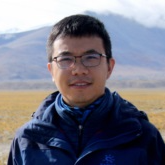Microwave Remote Sensing of Soil Moisture II
A special issue of Remote Sensing (ISSN 2072-4292). This special issue belongs to the section "Remote Sensing in Geology, Geomorphology and Hydrology".
Deadline for manuscript submissions: 30 June 2024 | Viewed by 1600
Special Issue Editors
Interests: remote sensing; soil moisture; hydrology; radar and radiometry; water cycle; climate change
Special Issues, Collections and Topics in MDPI journals
Interests: quantitative retrieval of land surface parameters from remote sensing data; radiative transfer in soil–vegetation–atmosphere systems; process-based modeling and data-driven methods; hydroclimatic extremes
Special Issues, Collections and Topics in MDPI journals
Interests: mountain water and heat exchange; soil moisture estimation and downscaling; mountain climate change
Special Issues, Collections and Topics in MDPI journals
Interests: remote sensing; soil moisture; ecohydrology; precision agriculture; uncertainty quantification
Special Issues, Collections and Topics in MDPI journals
Interests: microwave/optical remote sensing; soil moisture; vegetation water/biomass; L-MEB; PROSAIL; hydro-ecological applications
Special Issues, Collections and Topics in MDPI journals
Special Issue Information
Dear Colleagues,
This is the 2nd volume of the Special Issue “Microwave Remote Sensing of Soil Moisture”, which achieved great success. Based on the previous research results, this volume is aimed at the presentation of recent advances in microwave remote sensing of soil moisture.
Soil moisture is well-recognized as a pivotal parameter to link the water, energy, and carbon cycles. Active and passive microwave remote sensing has been well-recognized as the most promising means to infer soil moisture spatially and temporally. Active microwave remote sensing, particularly the synthetic aperture radar (SAR), has a much finer spatial resolution than passive sensors but suffers more from the geometrical features of the scene (e.g., surface roughness, vegetation, and topography). Passive microwave remote sensing has higher sensitivity to soil moisture than active radar but is limited by its coarse spatial resolution. Moreover, active and passive microwave signals respond differently to soil and vegetation parameters and can thus provide complementary information for each other.
Over the past several decades, great progress has been made in microwave remote sensing of soil moisture. Several field or aircraft experiments (e.g., SGP, SMEX, HiWATER, SMAPEx1-5, and SMAPVEX) have been organized to support the assessment and refinement of active and passive microwave soil moisture retrieval algorithms. At the same time, a number of microwave spaceborne satellites/sensors have been successfully launched to provide valuable opportunities to obtain soil moisture with various spatial scales from meters to tens of kilometers. These include the passive microwave instruments, such as the multi-frequency AMSR-E/2 (2002-), FY-3 MWRI (2008-), L-band SMOS (2009-), and SMAP (2015-), as well as the active microwave instruments, such as the scatterometer-based Metop/ASCAT series (2006-), monostatic ALOS-2 (2014-), Sentinel-1 (2014-), and Gaofen-3 (2016-), bistatic CYGNSS (2016-), and the P-band Biomass (planned launch in 2023). All of these open a wide range of possibilities to estimate soil moisture at regional and global scales. In this context, this Special Issue aims to present the most advanced theories, models, algorithms, and products related to microwave remote sensing of soil moisture.
The topics of the Special Issue include, but are not limited to, the following:
- Review on microwave remote sensing of soil moisture;
- Introduction to field or aircraft experiments and future satellite missions for soil moisture;
- Evaluation or comparison of remotely sensed soil moisture products using in situ measurements, model simulations, or other mathematical approaches (e.g., TCA, TCH, IVd, etc.);
- Development, calibration, or validation of the theoretical or semi-empirical forward models (e.g., microwave scattering model and radiative transfer model) used for soil moisture retrieval;
- Development, improvement, or comparison of remotely sensed soil moisture retrieval algorithms;
- Development, improvement, or comparison of spatial downscaling/upscaling methods and spatiotemporal fusion techniques of remotely sensed soil moisture;
- Application of remotely sensed soil moisture products in data assimilation, agriculture, ecology, hydrology, and other fields.
Dr. Jiangyuan Zeng
Prof. Dr. Jian Peng
Dr. Wei Zhao
Dr. Chunfeng Ma
Dr. Hongliang Ma
Guest Editors
Manuscript Submission Information
Manuscripts should be submitted online at www.mdpi.com by registering and logging in to this website. Once you are registered, click here to go to the submission form. Manuscripts can be submitted until the deadline. All submissions that pass pre-check are peer-reviewed. Accepted papers will be published continuously in the journal (as soon as accepted) and will be listed together on the special issue website. Research articles, review articles as well as short communications are invited. For planned papers, a title and short abstract (about 100 words) can be sent to the Editorial Office for announcement on this website.
Submitted manuscripts should not have been published previously, nor be under consideration for publication elsewhere (except conference proceedings papers). All manuscripts are thoroughly refereed through a single-blind peer-review process. A guide for authors and other relevant information for submission of manuscripts is available on the Instructions for Authors page. Remote Sensing is an international peer-reviewed open access semimonthly journal published by MDPI.
Please visit the Instructions for Authors page before submitting a manuscript. The Article Processing Charge (APC) for publication in this open access journal is 2700 CHF (Swiss Francs). Submitted papers should be well formatted and use good English. Authors may use MDPI's English editing service prior to publication or during author revisions.
Keywords
- soil moisture
- active microwave remote sensing
- passive microwave remote sensing
- product validation and error analysis
- retrieval algorithms
- downscaling/upscaling methods
- spatiotemporal fusion techniques
- GNSS-R
- data assimilation
- eco-hydrological applications
Related Special Issue
- Microwave Remote Sensing of Soil Moisture in Remote Sensing (11 articles)









